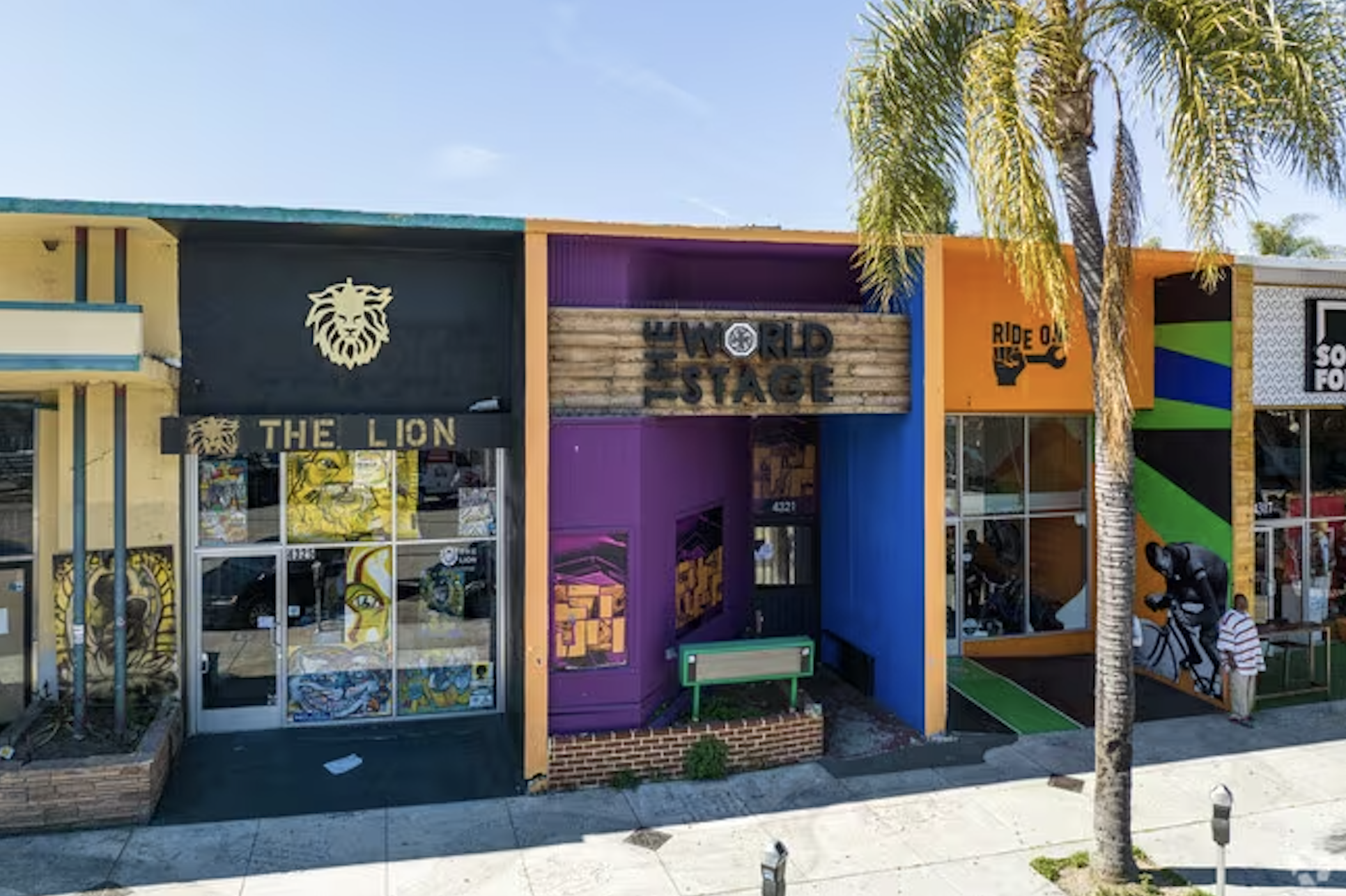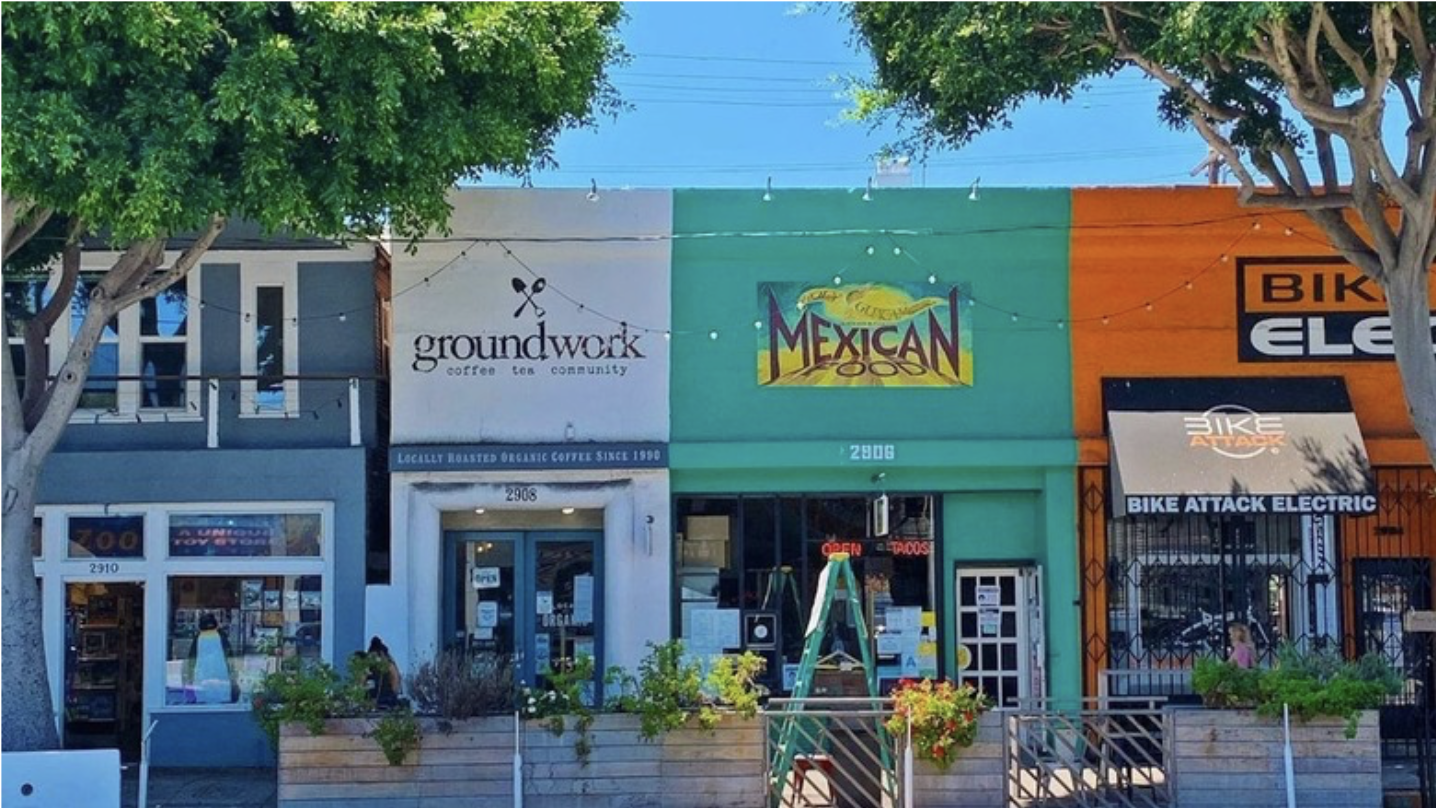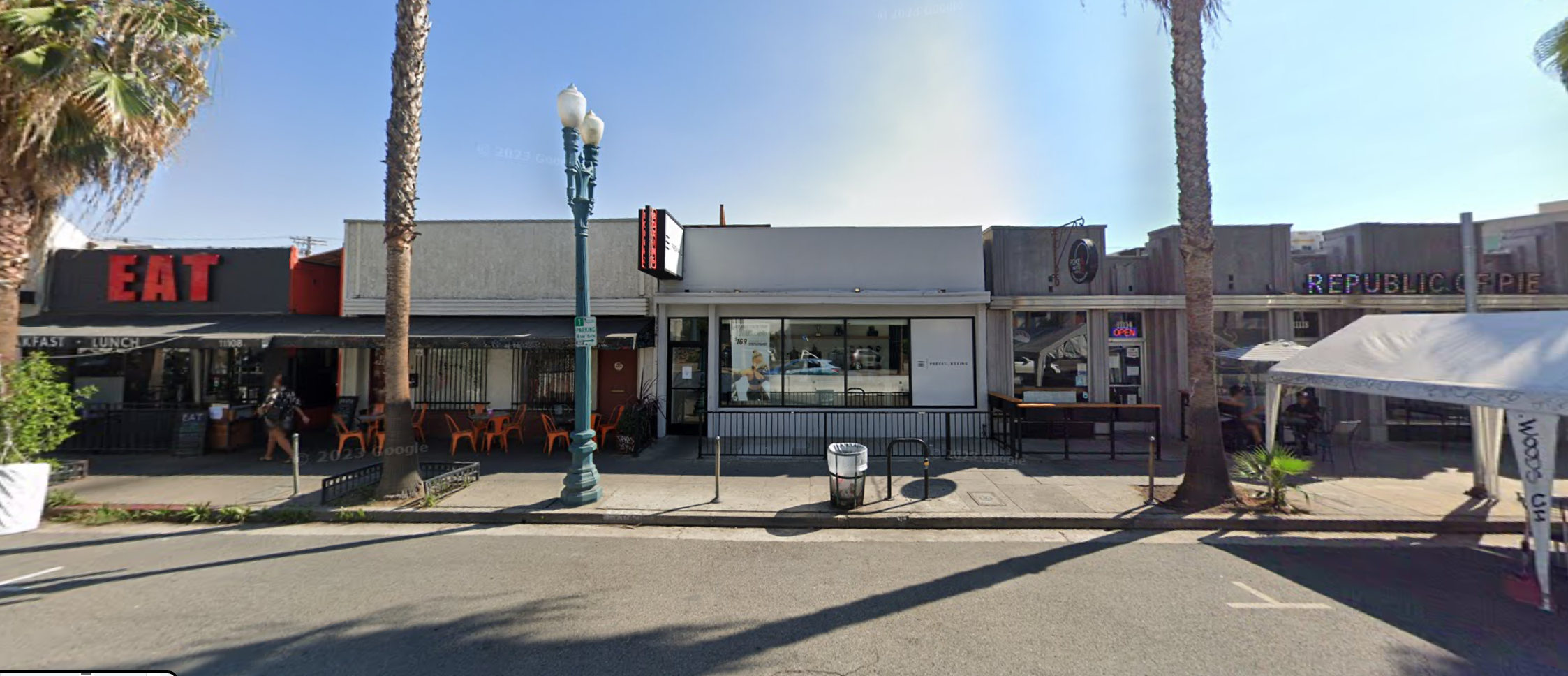How to Create a Vibrant, Walkable and Bikeable Street
Neighborhood Serving Retail

Leimert Park

Main St, Santa Monica

Melrose Ave

NoHo Arts District

San Fernando Blvd, Burbank
Choosing a location for housing is one of the most impactful decisions we can make. By choosing a street where housing can be built over existing Neighborhood Serving Retail and small, local shops and family-owned businesses, we can create a walkable neighborhood where residents can live car-light or even car-free.
There are two key reasons why small shops and Neighborhood Serving Retail (NSR) are important:
Small shops create destinations for a wide range of errands so residents can meet their daily/weekly needs within a few blocks from their house.
Big box stores deaden the street: there's nothing pleasant or vibrant about strolling from a Staples to an Office Depot to a Best Buy to a BevMo. And how often does a person need a printer cartridge or a flat screen TV?
Los Angeles already has great walkable neighborhoods – particularly our Historic Main Streets and Villages.
LA was once a city of 400 neighborhoods connected by trolleys and bikes (and later by cars.) They still exist: Westwood Village, NoHo Arts Center, Culver Blvd, Leimert Park, NoHo Arts Center – and they still have small local shops and restaurants and Neighborhood Serving Retail (“fine grain retail”) – giving the neighborhood a small town feel that draws in pedestrians to stroll, sit and shop. Almost any street with fine grain retail – small shops with storefronts that are under 50’ wide – has the bones for an LCI.



Articles & Resources
-

Housing and Architecture
-

Car-Lite Communities
-

Parking Ruins Everything
Technical Papers & Details













